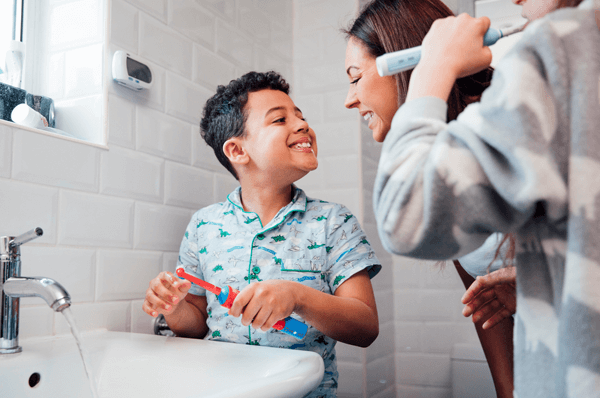There are hundreds of languages around the world, but a smile speaks them all.
Did you know that studies have shown that more than 45% of people would first notice your smile before your hair or clothes?! Having a healthy smile means taking care of those beautiful pearly whites, which means having a strict oral hygiene regimen. Looking for some tips to maintain that brilliant smile? Read on!
Oral hygiene is simple. It consists of 2 main pillars, these are brushing and flossing, along with a few aids such as mouthwash. Flossing can be kind of a forgotten act; some may even think that brushing alone is enough, but that is simply not true. Flossing is the only act capable of cleaning those hard to reach areas between the teeth, where most problems of the mouth tend to start. The American Dental Association (ADA) recommends flossing between your teeth at least once a day.
In addition to brushing your teeth and flossing, we also want to highlight the importance of brushing your tongue. Brushing your tongue is another important way of minimizing the bacteria in your mouth and can also help combat bad breath. Having a good oral hygiene routine in place is great for keeping your teeth white, helps combat harmful bacteria and keeps your gums healthy, too!
Dr. Adesanya, hailed as one of the best dentists in Bowie, Maryland explains the importance of brushing:
“Brushing your teeth is the most important act of oral hygiene there is. Tooth decay is a triple threat, resulting from bacteria, food particles and time. You cannot control time, and bacteria are already present inside our mouths naturally, so the only part of the equation that you can control is the food particles. Through brushing, you are essentially eliminating the source of nourishment for the decay producing bacteria, and with nothing to feed on, they simply cannot do any damage.”
How Many Times a Day Should You Brush Your Teeth?
A lot of research has gone to answer that particular question. However, the most suggested number of brushing times worldwide is 2 times daily, once in the morning and once before bedtime for two minutes each time. The reason for these specific times is due to the natural cycle of the body. Since the flow of saliva (which is a natural tooth cleaner) decreases during the night it is very important to never skip those two. Going to bed with clean teeth can help minimize the risk to your teeth and gums. This also shows that if you are unable to brush your teeth throughout your hectic workday, you should not neglect that nighttime brushing. And while we’re on the subject of brushing, don’t forget to brush your tongue!
What is the Best Technique to Brush My Teeth?
Dr. Adesanya suggests that while holding your toothbrush at a 45-degree angle you gently move your brush back and forth in short strokes starting at the gums and ending at the tips of your teeth. Don’t forget to brush the front, bottoms and backs of your teeth! This technique is recommended by Dr. Adesanya and the ADA and is also the least damaging to your teeth and gums. Need more information? Schedule an appointment with our hygienist today!
How Often Should I Replace My Toothbrush?
On average, a toothbrush should be changed every 3 to 4 months, or when the bristles start to fray as a worn toothbrush doesn’t clean your teeth very well and the rogue bristles could cause damage to your gums. It is also recommended that you use a fluoride toothpaste when brushing your teeth.
*Always make sure to replace your toothpaste after an illness. Bacteria can remain in the bristles of your toothbrush and lead to reinfection.
What Kind of Toothbrush Should I Use?
Don’t be fooled by the ads stating “our toothbrush cleans better than everyone else’s” or our unique design makes our brush an excellent bacteria killer” because these are simply not true. The ADA suggests that you use a soft bristled toothbrush that fits the shape of your mouth in order to reach all the crevices.
While both are viable options, electric toothbrushes have been proven to be more effective than manual toothbrushes. According to a report by Consumer Reports, electric toothbrushes remove 21 percent more plaque than a manual toothbrush and 11 percent more gingivitis after just three months of use. Healthline reports that “oscillating (rotating) toothbrushes seem to work better than just vibrating toothbrushes.” Of course, if you’re still not sure, Dr. Adesanya and his awesome hygienists help you determine which may be the best option for you.
Hopefully this answered some of your questions regarding oral hygiene, but if not, give Dr. Adesanya a call today!
Family Dentist in Bowie, Maryland
With patients that call Dr. Adesanya the best dentist in Bowie, Maryland, he takes pride in his work and in the level of care he provides to every single patient. With a focus on general and cosmetic dentistry, Dr. Adesanya’s goal and mission is to provide you and your family with the highest quality dental care in a caring, safe and relaxed environment.


0 comments on “Oral Hygiene Demystified”